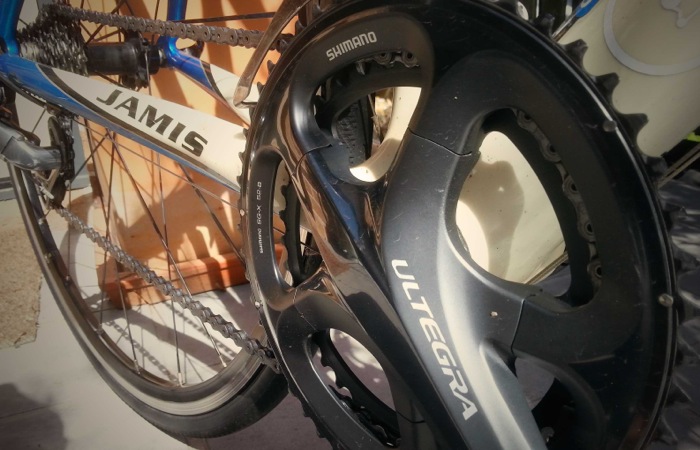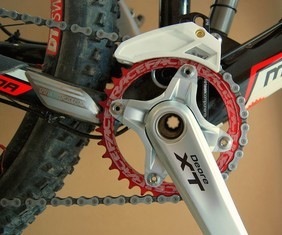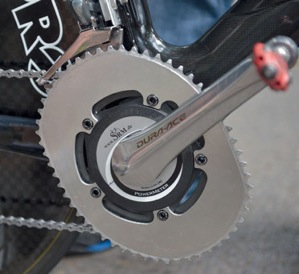
If you want to sound like a cycling super genius just start talking about cranksets after your next ride. But before you do that, read the rest of this article so you know what you're on about! Cranksets consist of the chainrings on your cranks, as well as the crank arms. This is where your power output enters the bike when you pedal, so it's quite an interesting topic to consider when you look at your bike as a whole.
Cranksets have the ability to offer various configurations, which is what we'll be covering below. So read on, and become a little more informed about putting your power to the pedals. Don't worry though; we will keep it simple by avoiding the numbers associated with gear ratios etc. That's a completely different topic to discuss on a rainy day...
CHAINRING COUNT
Road and MTB cranks can offer either one, two or three chainrings. Over the past few years, both disciplines have moved towards two chainrings which offer the same upper and lower gear ratios, but without the 'middle gear' separating them. Within the last three years, MTB bikes have even whittled it down to only one front chainring! This means that the gears on the back of your bike (called the cassette) have to offer more extreme gear ranges to make up for the lack of front chainrings.
Related article: "Compact Cranks: What are they and should I upgrade?" talks about another road bike drivetrain option.
LESS IS MORE

With the reduction of front chainrings, comes weight saving and less mechanical parts. Road bikes will remain fitted with double chainrings for some time, as a more diverse gear range is required to manage the steep climbs or super-fast top speeds of road riding.
MTB bikes on the other hand have headed towards using only one front chainring. These bikes don't have the need for super-fast top speeds, but more requirements for easy gears to conquer steep climbs. The rear cassette does make up for the lack of front gearing though, meaning that the bikes still have the same climbing ability but do sacrifice their top end speed in extreme cases.
NOTE: If riding a single front chainring, you can change your cassette to a different ratio, to match the terrain you normally ride. Flat and fast? Go for a better suited rear cassette ratio to offer more top end speed.
A slight detour to explain how the rear cassette makes up for what your crankset lacks. Some brands now even offer eleven gears on the rear cassette, instead of ten. This means that running a single front chainring is even more possible, and less likely to have any negative effects on gear selection, no matter the terrain. Various cassette ratios are also available to suit your riding.
When a bike is referred to as 'running a 1 x 11' gear system, this means that there's one front gear and eleven rear gears. The same applies to your road bike, which runs a '2 x 10' system. Have a look at your bike and see what gearing system it runs.
Further reading: Check out our test ride of the 1x11 drivetrain "1x11 Groupsets - What's the deal?"
CRANK LENGTH
Length is associated with leverage, so when you look at your cranks, you can see them as a lever. Longer cranks mean greater leverage. However, the only limitation on this topic is you. You can't ride longer cranks if you've got shorter legs, which is why different sized bikes come fitted with varied crank lengths. Having longer cranks also reduces your ability to comfortably spin at a higher cadence, so very few riders will intentionally go about changing their crank length. What comes fitted to the correct sized bike is almost always the best suited crank length for a person of your height.
LET'S GET OSYMETRICAL

To confuse the life out of you, we're taking a quick look at osymetric chainrings. If you are considering changing your crankset based on what you've read, you might want to go further and consider these!
Osymetric chainrings are formed into a slightly more oval shape, to help you increase your power output and pedaling efficiency. Osymetric chainrings do this by eliminating the much dreaded 'dead spot' that elite cyclists refer to. Here's how they work... The longer axis of the oval chainring is aligned (and is adjustable to suit each rider) so as to be engaged during your most powerful pedal phase - 2 o'clock through to 5 o'clock in your pedal stroke. This gives the rider maximum leverage and torque to the rear wheel.
When you enter the dead-spot of your pedal stroke - from approximately 9 o'clock through to 1 o'clock, the shorter axis of the pedal stroke is then engaged, which acts as a shorter lever and provides less resistance. This results in a more efficient pedal stroke, and a science degree.
You'll see a handful of pro riders using these cranksets, but not too many of your friends will have their bikes fitted with osymetric chainrings. This is partially due to added cost as well as the need to be an elite athlete to truly benefit from these micro percentiles of performance increases.
Just as a last bit of advice, be aware of costs incurred when trying to change the current setup of your bike. If your bike is currently running three chainrings, you'll need to replace several parts before transforming your bike into a '2 x 10' setup. The same applies to your MTB, so consult your experienced mechanic at the bike shop before committing to potentially costly exercise!


